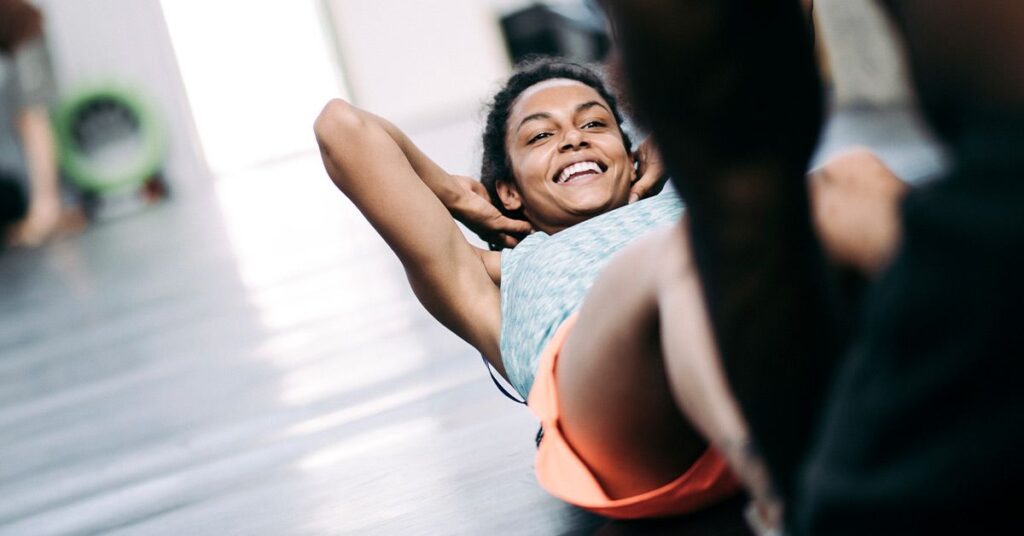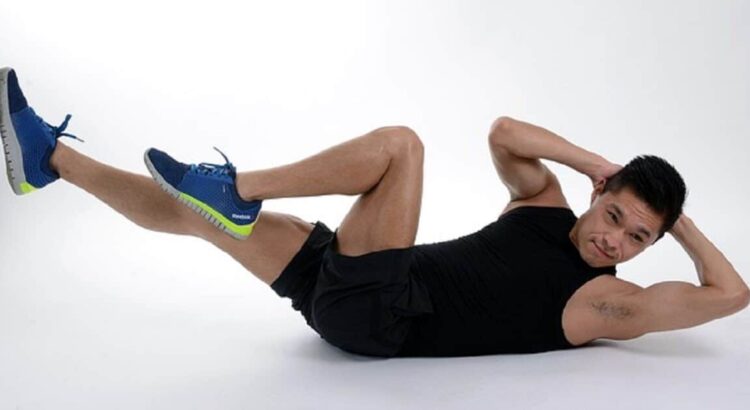Situps are a free, equipment-free abdominal-strengthening exercise. You would be wrong to assume that sit-ups and crunches are interchangeable. You can tone your core muscles and burn a lot of calories by performing sit-ups, which also have some special advantages.
Sit-Ups burn an average of 686 calories per hour for someone who weighs 180 pounds. Additionally, your body weight and the nature and degree of your exercise affect how many calories you burn. Please read on for more information about sit-ups.
What Influences My Calorie Burn?
Your ability to burn calories while performing situps depends on a number of factors.
These variables include metabolism, intensity, and duration, according to personal trainer and nutrition coach April Whitney, who is NASM-certified.
Your metabolism is also dependent on several factors, including:
- Height and weight. The more calories a person burn depends on their size and metabolism. Even at rest, this is accurate.
- Sex. Because they typically have less body fat and more muscle, men typically burn more calories than women when performing the same exercise at the same intensity.
- Age. Your health changes as you get older, and this includes how many calories you burn. Increased body fat and decreased muscle mass are the root causes of this slowdown.
When trying to burn more calories, intensity is the one factor that seems to matter the most. Intensity can be raised by adding more weight or performing more repetitions in a set amount of time.
How Many Calories Do 100 Sit-Ups Burn?
Calisthenics includes sit-ups. This is a general description of exercises you can do using only your body weight. Push-ups, pull-ups, and body-weight squats are additional examples. The usual procedure is to perform one or more sets with a certain number of repetitions before moving on to the following exercise.
The best way to determine how many calories 100 sit-ups burn is probably by wearing a heart rate monitor, but there are other tools you can employ. According to Harvard Health Publishing, a 155-pound adult burns 167 calories after 30 minutes of calisthenic exercise, which consists of bodyweight exercises like crunches.
Accordingly, based on your heart rate and level of effort, you can burn just over five calories per minute. The total number of calories burned, if 100 sit-ups are performed in 3 to 6 minutes, would be just over 15. I guess it’s not exactly a game-changer.
According to the Mayo Clinic, the calorie burn range varies due to variations in individual characteristics like body weight and exercise intensity. Since moving your body through space requires more energy when you are heavier, you will burn more calories while engaging in a particular activity.

According to Harvard Health Publishing, the calorie breakdown for 100 sit-ups in 3 to 6 minutes looks like this:
- 125 pounds: 13.5 to 27 calories
- 155 pounds: 16.7 to 31 calories
- 185 pounds: 20 to 40 calories
You might burn more or fewer calories depending on whether you weigh more or less than these figures.
How To Do Sit-ups?
Since they don’t require much equipment, to begin with, sit-ups may appear to be a very simple exercise to perform. Although this might be true, it’s still crucial to perform any type of sit-up with proper form.
Doing sit-ups step-by-step:
- Lie on the floor facing the ceiling with a slight bend in your knees and arms bent at the elbows and hands lightly touching your head by the ears
- Engage your core and lift your upper body so your right elbow touches your left knee
- Return to the start position then lift your upper body so your left elbow touches your right knee
- Return to the start position and repeat
Benefits Of Sit-ups
People all over the world have been performing sit-ups for centuries as a classic exercise. Regular sit-ups only require you to use your body weight, so starting out you don’t need any additional equipment.
Sit-ups work many different muscles, including:
- Rectus abdominis
- Transverse abdominis
- Obliques
- Hip flexors
- Chest
- Neck
Sit-ups not only strengthen all of these muscles but also your lower back and glutes, which help with posture. Similar exercises like crunches and other static core exercises only require you to have a limited range of motion. These exercises require you to have a much wider range.
Regular sit-up practice not only increases the muscle mass in your core and abdomen but also tones these areas. If you want to gradually lose body fat, building muscle is essential because doing so makes fat loss easier.
Sit-ups lower the possibility of back pain and lower back injuries by enhancing the strength of the pelvis, lower back, and hips. Incorporating sit-ups into your workouts can help you avoid musculoskeletal injuries, according to a 2010 study.
Some additional benefits of performing sit-ups include:
- Better balance and stability
- Increased flexibility
- Athletic performance
- Improved posture
Increasing Your Calorie Burn With Variety
Although most people find it difficult to perform 100 traditional sit-ups, you can increase your calorie burn by engaging more of your core and changing up your ab exercises. The American Council on Exercise advises adding a few of these difficult moves to your upcoming ab workout.
Seated Hip Hinge
- Start by sitting on the floor with your knees bent and your heels touching the surface.
- Keep your arms relaxed as you cross them over your chest.
- Hinge at your hips so that your torso reclines at a 30-degree angle.
- For 30 seconds, maintain this posture.
Lean as far back while maintaining a straight back to make the challenge more difficult. Alternatively, you could stand up off the ground to add more instability.
Hollow Rock
- Lay on your back with your arms overhead and your legs out straight.
- Lift into a “hollow” position, with arms and legs up, lower back pressed into the ground, and head in line with the arms. Start rocking your body forward and backward while engaging your core; you’ll resemble the bottom of a rocking chair.
- 30 seconds should be dedicated to these rocks.
Side Plank
- As you supinely balance on the outside of your right foot, place your right hand beneath your right shoulder. The left foot should be placed on top of the right foot.
- Raise your left arm up toward the ceiling.
- Actively lift the body up and away from the floor using your right-side obliques.
- Repeat on the other side after holding for 30 seconds.
Read more: How Many Calories Should You Burn During a Workout?
Mountain Climber
- Start out in a plank position with your hands directly beneath your shoulders and your body aligned in a straight line from head to toe.
- Return your leg next to the other after bringing one knee toward your chest while keeping the foot flexed.
- Use the opposing leg to alternate.
- For a total of 60 seconds, keep your body in line while quickly alternating your legs.
Your core workout will be more intense thanks to this exercise, increasing the calorie burn from your 100 sit-ups.
